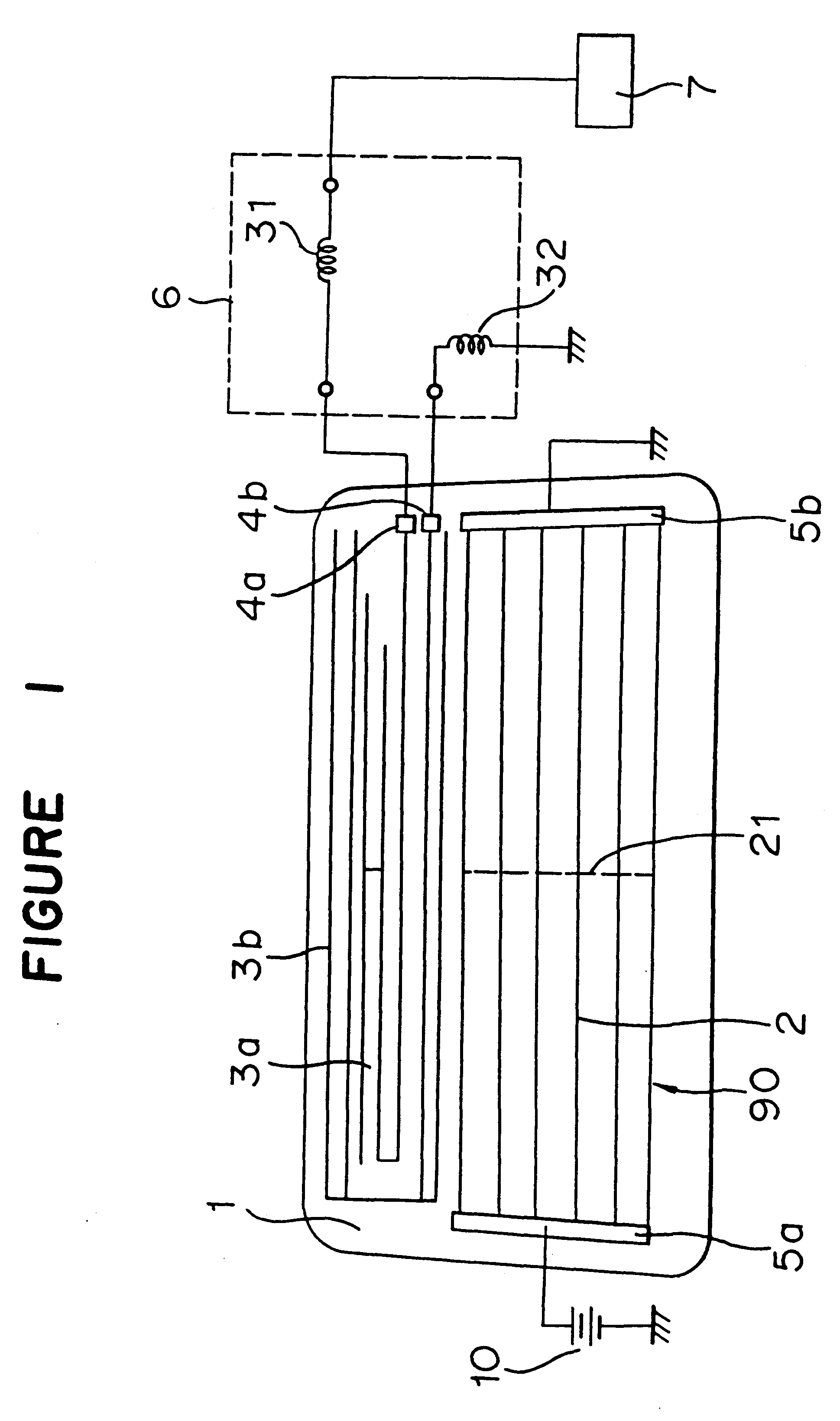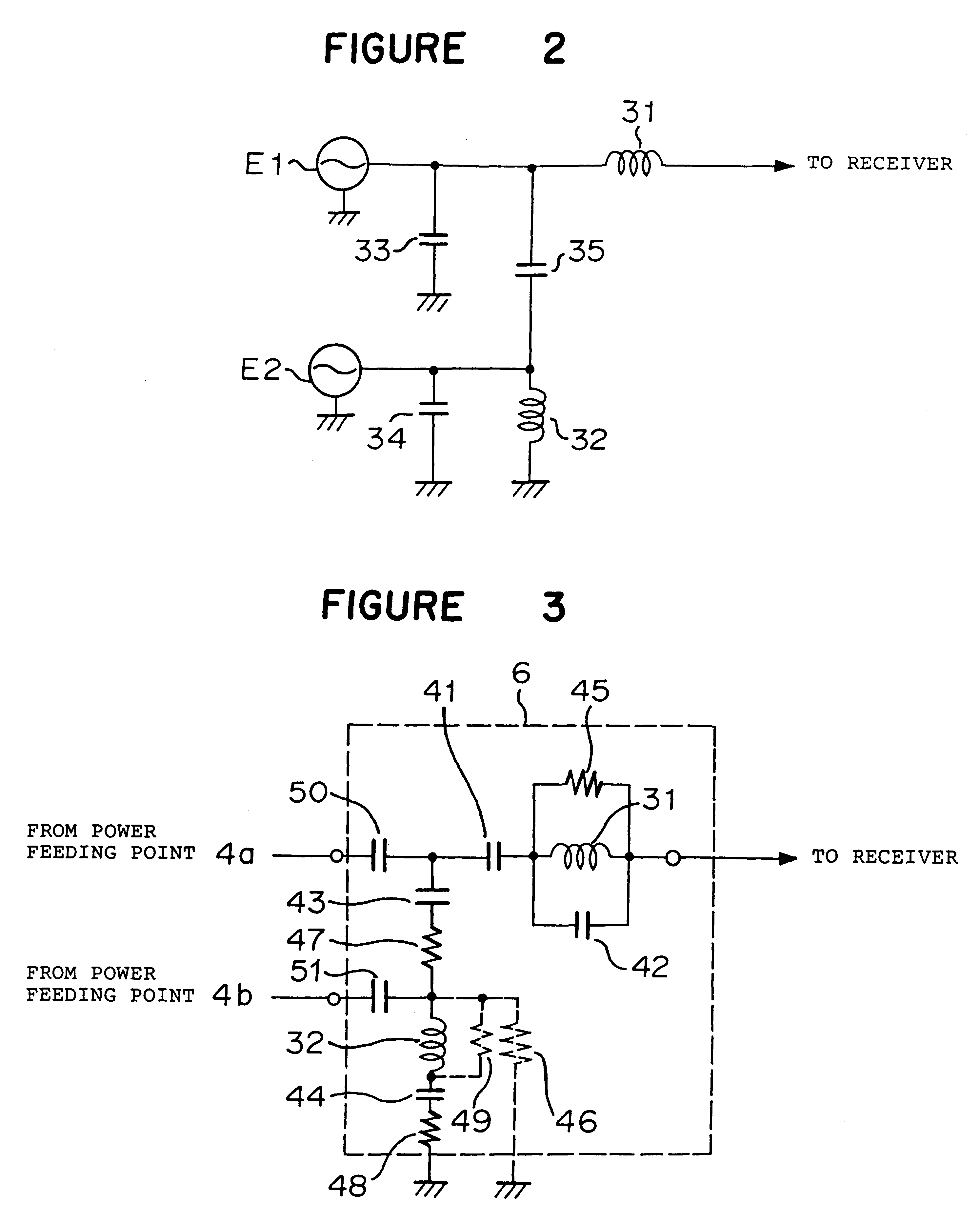Glass antenna device for an automobile
a technology for antenna devices and automobiles, applied in the direction of antennas, antenna details, antennas, etc., can solve the problems of poor s/n ratio, insufficient receiving sensitivity, insufficient signal receiving sensitivity and directivity for fm broadcast,
- Summary
- Abstract
- Description
- Claims
- Application Information
AI Technical Summary
Benefits of technology
Problems solved by technology
Method used
Image
Examples
example 3
The glass antenna device as shown in FIG. 1 was formed in a rear window glass sheet of automobile. The same resonance circuit 6 as in FIG. 6 was employed wherein the capacitors 50 and 51 and resistors 46, 48 and 49 were not provided (the resistors 46 and 49 were opened; the resistor 48 was shortcircuited and the capacitors 50 and 51 were shortcircuited). With respect to the elements used, the same circuit constants as in Example 1 were used except for the first coil 31, the coil 52 and the resistor 47. The circuit constants of these elements were as follows. In FIG. 11, a solid line shows a result of the measurement of the FM broadcast band sensitivity in Example 3.
First coil 31: 120 .mu.H
High frequency choke coil 52: 2.7 .mu.H
example 4
The glass antenna device as shown in FIG. 1 was formed in the same manner as in Example 3 except that the high frequency choke coil was not provided. In FIG. 11, a dotted line shows a result of the measurement of the FM broadcast band sensitivity of Example 4.
example 5
The glass antenna device as shown in FIG. 9 was formed in a rear window glass sheet of automobile wherein the first antenna conductor 3a, the second antenna conductor 3b and the defogger 90 were the same as those in Example 1. The same resonance circuit 6 as in FIG. 6 was employed wherein the capacitors 41 and 44 and the resistors 46 and 48 were not provided (the resistor 46 was opened, the capacitors 41 and 44 and the resistors 48 were shortcircuited).
A high frequency choke coil of 2.2 .mu.H was connected in series to the second coil 32. No high frequency choke coils 12a, 12b were not provided. The shortest distance between the second antenna conductor 3b and the defogger 90 was 10 mm, and the coupling capacitance between the second antenna conductor 3b and the defogger 90 was 80 pF. The circuit constants of the elements used were as follows.
First coil 31: 150 .mu.H
Second coil 32; 680 .mu.H
Capacitors 50, 51: 1000 pF
Coil 52: 2.2 .mu.H
Res...
PUM
 Login to View More
Login to View More Abstract
Description
Claims
Application Information
 Login to View More
Login to View More - R&D
- Intellectual Property
- Life Sciences
- Materials
- Tech Scout
- Unparalleled Data Quality
- Higher Quality Content
- 60% Fewer Hallucinations
Browse by: Latest US Patents, China's latest patents, Technical Efficacy Thesaurus, Application Domain, Technology Topic, Popular Technical Reports.
© 2025 PatSnap. All rights reserved.Legal|Privacy policy|Modern Slavery Act Transparency Statement|Sitemap|About US| Contact US: help@patsnap.com



